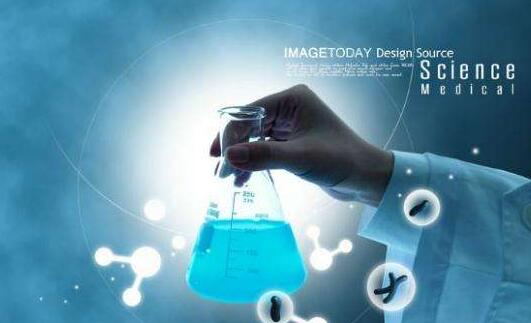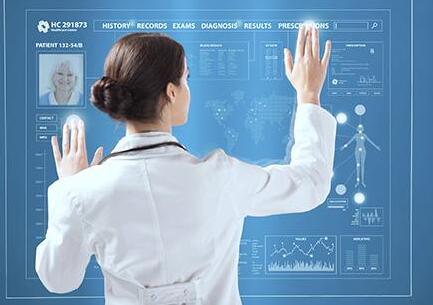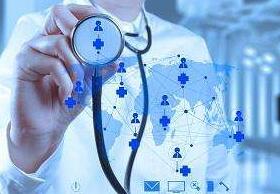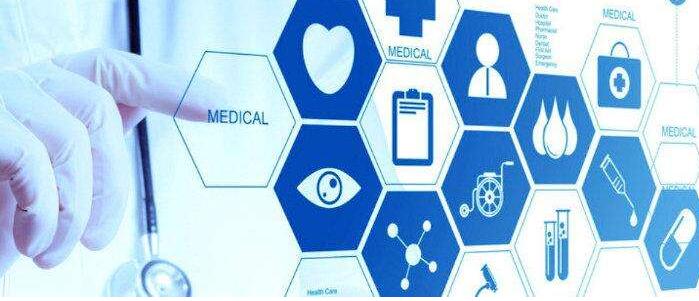Through smarter, more comprehensive interconnection, more thorough perception and measurement, smart medical care enables doctors, patients, and medical institutions to collaborate with each other to achieve a high degree of mobility and sharing of medical information. center. This article first introduced the smart medical system architecture, followed by the five key technologies and architecture of smart healthcare, and finally introduced the application of smart medical technology.

1, application service platform
The smart medical application service platform is mainly composed of smart medical public access platforms. Through the residents' self-help portal, a user-centered integrated resident health service system is built to monitor the health status of the residents, the development of the disease, and the whole process of rehabilitation. Assess and provide services such as health consultation and self-care management. It can also obtain personal electronic health records/electronic medical records through mobile terminal devices such as mobile phones to achieve daily medical consultations and health and medication reminders.
2, application support cloud platform
1) Service Platform Layer
The service platform layer mainly includes a smart cloud service platform and a smart cloud data center. The smart cloud service platform is an integrated platform for the medical industry. It completes the data collection, exchange, and integration of medical and health organizations by means of services. By providing a unified basic service, it is based on the residents' health records and is based on electronic medical records. Focusing on prevention and control, decision-making analysis ensures that the “smart cloud service†realizes interconnection and interoperability of medical institutions and establishes a smart medical data center. The smart cloud data center is built on the premise of a unified core data framework and based on national standards. It is able to complete the convergence and integration of relevant information of medical institutions and support the sharing of residents' health information. At the same time, through the mining and analysis of massive medical data, it assists managers in making effective decisions.
2) Basic support system
The basic support system is mainly composed of operational support platforms and basic equipment. The operation support platform is in the position of the link between the two major components; one is the basic middleware, which provides resource virtualization middleware, application service middleware, and database middleware. The second is the operational support service, which implements downward support for the infrastructure. Integrate organically, provide cloud computing and cloud storage functions, solve centralized management of distributed resources and decentralized services of centralized resources, effectively support various types of perceived resources and data, realize service-oriented demand-demand aggregation applications, and support analysis and processing of high-performance and massive data . The basic equipment layer mainly includes servers, storage devices, switches and so on.
3, infrastructure platform
The infrastructure platform is mainly composed of the intelligent perception layer and the medical and health special network. Among them, the smart medical and health perception layer involves different types of sensors and sensor gateways to realize the identification of medical and health objects and the collection of medical and health resources. The medical and health network mainly adopts three kinds of access methods, namely, the overall planning of operators, the access of dedicated lines, and Internet access via VPN. At the same time, under the circumstances of fully considering the integration, sharing, and security of other areas in smart cities, the entire smart city network will be managed and managed in a unified manner.
4, standard specification system
The standard system of standards is the basic work of Zhizhi Medical Construction, and it is also the basic prerequisite for information exchange and sharing. Under the principle of “unified specification, unified code, and unified interfaceâ€, smart medical construction is carried out. Through standardized business carding and standardized data definition, it is required that system construction must strictly abide by established standards and technical routes, thereby realizing multiple departments (units). ), multi-system, multi-technology, and information interconnection in a heterogeneous platform environment to ensure the maturity, scalability, and adaptability of the entire system to avoid the risk of system construction. Mainly include: smart medical and health standards system, electronic health records and electronic medical record data standards and information exchange standards, management regulations of relevant institutions for smart medical and health systems, regulations for the management of residents' electronic health records, standards for intervention of medical and health institution information systems, and information sharing for medical resources Standards, health management information sharing standards, standards and regulations system management and other construction content.
5, security system
Smart Healthcare mainly builds security protection systems in six areas, including physical security, network security, host security, application security, data security and security management, and provides strong technical support for the protection of smart healthcare systems. By adopting multi-level and multi-faceted technical means and methods, comprehensive protection, detection, and response security measures are implemented to ensure that the smart healthcare system has overall capabilities such as security protection, monitoring management, testing and evaluation, and emergency response.

1. Internet of Things Technology
The International Telecommunications Union (ITU) regards RFID technology, sensor technology, nanotechnology, and intelligent embedded technology as key technology networks in the development of the Internet of Things. In the medical and health field, the main application technologies of the Internet of Things are three aspects: material management visualization technology, medical information digital technology, and medical process digital technology. For example, with the help of medical IoT technology, real-time monitoring, automatic data collection and telemedicine monitoring are realized. With RFID identification codes, mobile device management systems are used to directly enter the system under wireless network conditions to complete device identification, positioning, management, and monitoring. The use of large-scale medical equipment can be fully utilized and highly shared, and medical costs can be greatly reduced. At the same time, information technology such as patients, blood, and medical care and management can be realized using the Internet of Things technology.
2, cloud computing technology
Cloud computing is a product of the convergence of traditional computer and network technologies such as grid computing, distributed computing, network storage, and virtualization, as well as a new emerging shared infrastructure. "In the cloud computing industry, patients' electronic medical records or The inspection information is stored in the central server, the patient's information and related information can be accessed globally, and the medical staff obtains the data from the Internet-activated equipment in real time.Its ultra-large-scale, virtual, multi-user, high reliability, and high scalability Sex has changed the way of informatization in the medical and health industry, greatly reduced the cost of information system construction in the medical industry, provided strong support for the medical institutions to improve the personalized service quality of patients, and realized the concept of patient-centered wisdom and deeper Intelligent.
3, mobile computing technology
The mobile computing technology refers to the purposeful information exchange between the mobile terminal and other mobile terminals or fixed computing devices through wireless communication. Mobile computing helps to complete the semantic understanding, reasoning and decision-making of the information obtained by medical network internal network sensors. Whenever and wherever it is needed, it can access the required information through certain devices to achieve intelligent control. Mobile computing provides support for the detection and early warning of remotely moving objects and the rapid transmission of data, which will earn time for first-aid medical personnel.
4, data fusion technology
Data fusion technology refers to making full use of multi-sensor information in different time and space, using computer to obtain several observations in time series, automatically analyzing, synthesizing, dominating, and using under certain criteria to obtain consistent interpretation of the measured object. The information processing technology that is described in order to accomplish the required decision-making and evaluation tasks is the same. Taking a medical image as an example, in the course of clinical diagnosis, treatment, and surgical navigation, various patterns of images are registered and fused to provide complementary medical information; the fusion of functional images and morphological images is realized, and the anatomical position of the precise functional obstacle area is achieved. And to achieve functional / structural relationship assessment and research. The target information from different sensors at different times or the multi-target information at the same time can be integrated and coordinated to optimize and greatly improve the intelligence and information level of the medical system.

The smart medical technology architecture is divided into three layers: application layer, network layer, terminal, and awareness extension layer.
First, the application layer
The application layer is divided into seven system modules based on medical and health business scenarios:
1. Business management system, including hospital charges and drug management systems;
2. Electronic medical record system, including patient information and image information;
3, clinical application systems, including the computer doctor's order entry system (CPOE);
4, chronic disease management system;
5. Regional medical information exchange system;
6, clinical support decision-making system;
7, public health system.
Second, the network layer
The network layer includes a wired network and a wireless network. The wired mode may support Ethernet, serial communication, and field bus. The wireless mode may support WiFi, mobile network, RFID, and Bluetooth. The gateway performs data storage and protocol conversion between the network layer and the awareness extension layer, and sends the data through the access network, and has the ability to control and manage the service terminals.
Third, perceived extension layer
The terminal and the sense extension layer refer to various sensor terminals that provide hardware assurance for the medical health monitoring service. For different applications, these sensor terminals can form corresponding sensor networks, such as ECG monitoring sensors, breathing sensors, blood pressure sensors, blood glucose sensors, GPS and cameras.

The application of Internet of Things technology in the medical field can help hospitals achieve smart medical management of people and intelligent management of objects, so that "smart medical" can be realized and promoted.
The Use of Internet of Things Technology in Smart Healthcare
Currently, the Internet of Things technology has many applications in the medical industry. Its basic content includes:
(1) Intelligent Personnel Management
To achieve the monitoring of the patient security system, patient flow management, access control and safety; baby safety management system, medical personnel management system. Strengthen access to the management of infant and maternal wards, confirm the status of baby-control management, mothers and nursing staff, and issue alarms when stealing or misplacing, and at the same time record and inquire about the physical status of newborn babies and confirm the mastery. Newborn babies are safe.
(2) Intelligent medical process
Rely on the Internet of Things technology communication and application platform to achieve real-time payment and online diagnosis, online pathological section analysis, equipment interoperability, as well as registration, diagnosis and treatment, inspection, hospitalization, surgery, nursing, discharge, settlement and other intelligent services.
(3) Supply chain management intelligence
Supply chain management systems for supply, sorting, distribution, and other aspects of medical-related products such as medicines, consumables, and equipment. Rely on the Internet of Things technology to realize the management of hospital assets, blood, and hospital disinfectants. The product logistics process involves a lot of information from different companies. Companies need to know the specific location of the goods and other information in order to make a timely response. In the production of pharmaceuticals, a comprehensive inspection of the production process, market flow and patient medication is implemented through the Internet of Things technology.
(4) Intelligent management of medical waste
Traceability is that users can collect data, extract data, and obtain management functions through interfaces, and perform analysis, statistics, and reports to make management decisions. This also provides enterprises with a platform for data input, import, and upload.
(5) Intelligent Management of Health Management
Carry out family safety monitoring and obtain patient's comprehensive medical information in real time. With telemedicine and self-help medical services, timely collection and highly shared information can ease the dilemma of resource shortage and uneven resource allocation, and reduce public health costs.

Technical application examples
1, RFID technology to achieve transfusion anti-error
Infusion is an important part of current medical activities. It has a large workload and is busy and trivial. Once an error occurs, it may endanger the safety of the patient. Therefore, in the process of drug deployment and distribution, we should make full use of the Internet of Things technology to reduce the potential safety problems caused by non-standard operations, and to correct medical errors and other issues.
The infusion error prevention system includes a radio frequency transmitter, a radio frequency receiver, a patient wrist band, and a control center device; the radio frequency transmitter is disposed on the patient's medicine, and the radio frequency receiver is wirelessly connected to the radio frequency transmitter through a unique radio frequency signal.
Each patient was matched with a wristband on admission, and the control center device automatically numbered and recorded various patient information and generated a unique RF signal. In the follow-up treatment of the patient, the same major number is used for each drug or treatment measure, as well as for the patient's various examination sampling samples.
When the center dispenses drugs or the department adds drugs to patients, each drug is embedded in a radio frequency transmitter.
When the medical staff takes the drug out for treatment, the radio frequency receiver on the wristband of the patient receives the signal from the radiofrequency transmitter on the medicine within the receiving range of the radio frequency signal, automatically checks and recognizes the corresponding patient information, judges whether the medicine is correct, and prevents Wrong treatment.
If the radio frequency receiver finds that the radio frequency signal of the medicine matches correctly, it prompts the medical staff to promptly correct; if the radio frequency receiver finds that the medicine's radio frequency signal does not match, that is, it is not the patient's medicine, an alarm sounds immediately and an error is notified, and the notification Control center device. Medical staff can take appropriate measures to remedy.
The radio frequency signal verification technology can fundamentally solve the mistakes in the process of dispensing-storage-treatment, thereby reducing the occurrence of medical accidents, and also reducing the pressure of medical staff and easing the conflicts between doctors and patients; through highly integrated information management measures and advanced IoT technology can make the entire medical faults clear and clear, and each step is uploaded to the control center, leaving behind the evidence; data networking through the control center, and the formation of big data, through the big data on the patient's own information and treatment process The comparison sums up the corresponding experience and is used to assist later treatments.
2. IOT-based nurse workstation
There are many sickbeds and few nurses at each nurse station. Without the centralized monitoring and management of the nurse stations, there are many defects in the efficiency, security, and optimal resource allocation of nurses.
Using the Internet of Things technology, new medical services and management functions such as automatic identification of inpatients and medical staff, personnel positioning, electronic guided medicine, automatic collection and monitoring of vital signs information, electronic ward inspection, and access security control can be realized, including the following Five subsystems: patient identity matching system, patient safety management system, patient real-time positioning monitoring system, patient vital sign data collection and monitoring system, and IoT ward management system. The patient identity matching system registers identity information through the admission registration system when the patient is admitted to hospital, wearing a unique electronic wristband. For active IoT tags, the information sent by the patient through the worn electronic wristband tag can be detected at any time by the covered wireless IoT probing network. The medical staff can use the workstation computer to identify the patient's identity information at different locations at any time.
The patient safety management system utilizes the online detection and long-range reading recognition features of the Internet of Things electronic tag to prompt the monitoring station to alert when the patient's wrist band is abnormally removed and dropped. When the patient leaves the care area without authorization, the IoT detector at the area entrance and exit will verify the identity and alert the working console to prevent the patient from leaving the area without permission.
The patient real-time positioning monitoring system under the coverage of the Internet of Things detection network enables the patient wearing the IoT wristband to be in a state of medical monitoring in real time, so that the hospital can better provide medical care according to the patient's activity. According to the location of the recent Internet of Things probe points and the information returned from the detected IoT wristbands, patient information in the vicinity of the area can be readily known, and medical staff can provide health care services as needed.
The patient vital sign data collection and monitoring system utilizes the data transmission and transmission characteristics of the Internet of Things in combination with a miniature patient body temperature measurement probe and a mobile physical sign monitoring device to perform online patient sign data collection under the coverage of the Internet of Things receiver network. Guardianship management enables the patient to receive care and care in an unaccompanied environment. He can provide the medical staff with the physical condition of the patient at any time and deal with emergency and nursing care needs in a timely manner.
The IoT Ward Management System uses a wireless network to cover and configure mobile IoT nurses' workstations. Nursing personnel can leave the computer workstations of the nurses' desks to perform online operations. The online use of information management devices can be used anytime anywhere to perform patient identification checks. Data access, location tracking, medical work records and a series of on-site task operations, get rid of the traditional paper registration and verification operation methods, realize the operation and management of mobile on-site operation, and improve work quality and efficiency.
Pure Green Color Led Display,0.56 Inch Grey Face Led Display,2 Digits Grey Face Led Display,0.56 Inch Led Display
Wuxi Ark Technology Electronic Co.,Ltd. , https://www.arkledcn.com